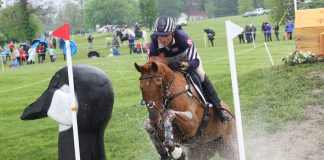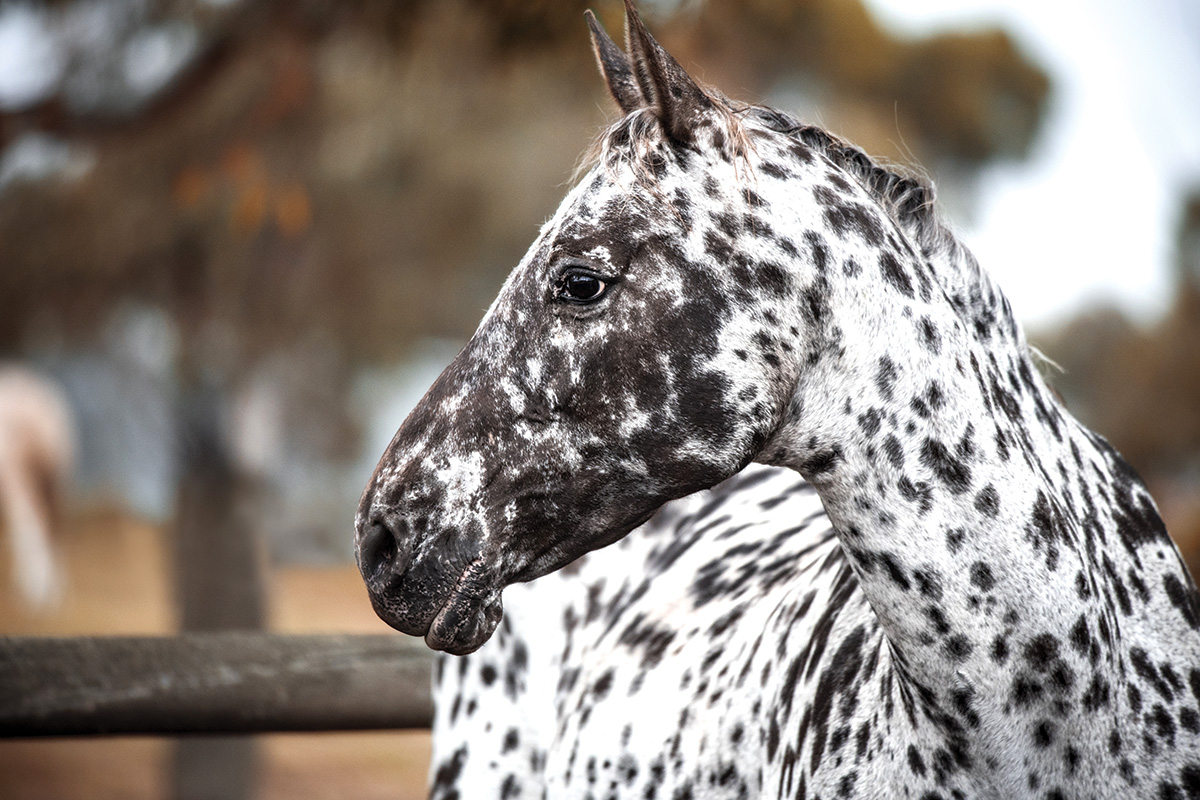
The Appaloosa and the Knabstrupper are both beautifully spotted breeds, and while they are quite similar in many ways, there are key differences. Learn more about these eye-catching horses.
The Appaloosa
As Spanish conquistadors and settlers made their way to the Americas, they brought horses with them—including spotted ones. These colorful horses eventually entered horse-trading circles of Mexico, California and Oregon, painting the Plains.
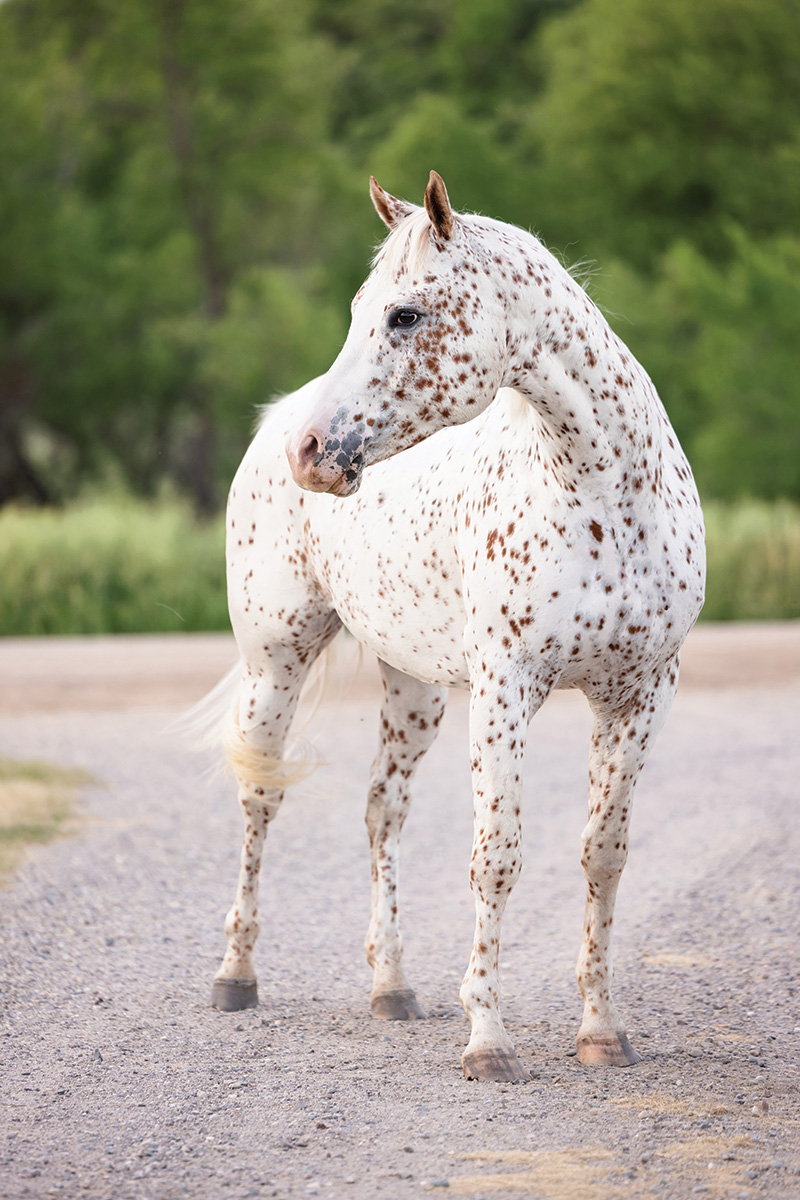
Horse trading was common among the Native American tribes. The Nez Perce tribe in Washington, Oregon and Idaho were renowned for their refined craft in breeding “a Palouse horse,” named after the nearby Palouse River. Soon referred to as “Appaloosas,” they were bred not just for their spots, but for speed, endurance and intellect. These characteristics helped the tribe elude the U.S. Calvary in several battles during the Nez Perce War.
In October, 1877, a five-day battle took place in Montana, ultimately forcing the Nez Perce tribe to surrender. The Appaloosa Museum documents, “The U.S. Army took over 1,000 of the tribe’s surviving horses, sold the horses that they could find buyers for and shot many of the rest.”
The Appaloosa Breed Today
Efforts to revive the breed began in 1938, soon becoming the Appaloosa Horse Club (ApHC), located in Moscow, Idaho. More than 700,000 Appaloosas have been registered since the ApHC’s founding in 1938.
Since 2018, the organization says they’ve seen a 20 percent rise in the number of registrations and transfers (horses changing hands). Appaloosas are found in nearly every discipline, from horse racing and western pleasure to dressage, jumping, endurance, working cattle and more.
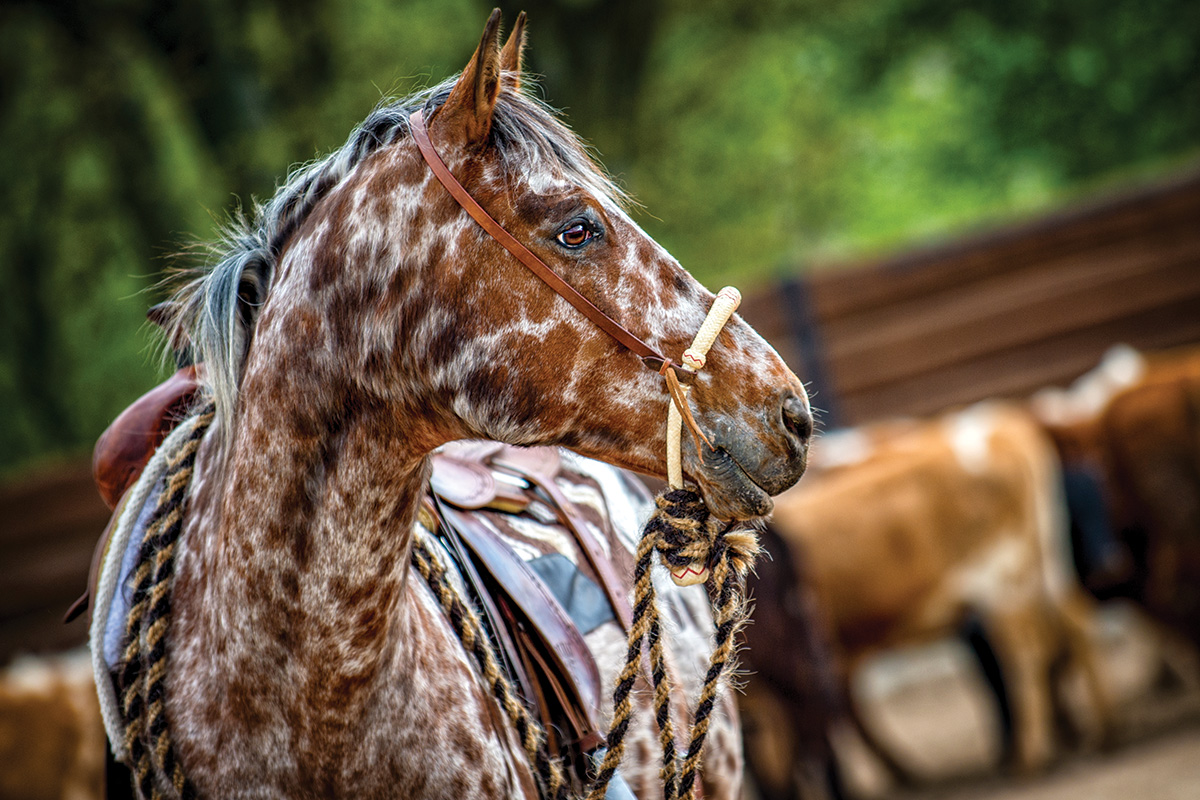
Horses can be registered Appaloosa if they are from registered Appaloosa lineage or foaled from one registered Appaloosa parent with an approved cross. These include registered Quarter Horse, Thoroughbred or Arabian. Geldings or spayed mares with color and an unknown pedigree can be “hardship registered.”
Appaloosa characteristics include a recognizable coat pattern, vertically striped hooves, mottled skin (mottling of pink and black skin), and visible white sclera of the eye surrounding the iris.
Like a Dolly Parton song, Appaloosas can have a coat of many colors, with base colors such as black, gray, palomino, chestnut, bay, buckskin, cremello, grulla and dun.
Several genetic factors influence the Appaloosa’s coloration, which is credited to the leopard complex allele (LP), which in conjunction with PATN1 and other not-yet genetically testable PATN modifiers helps to control the amount of white patterning. This unique leopard coloration likely dates back thousands of years. A riveting topic in itself, you can visit The Appaloosa Project website for more details.
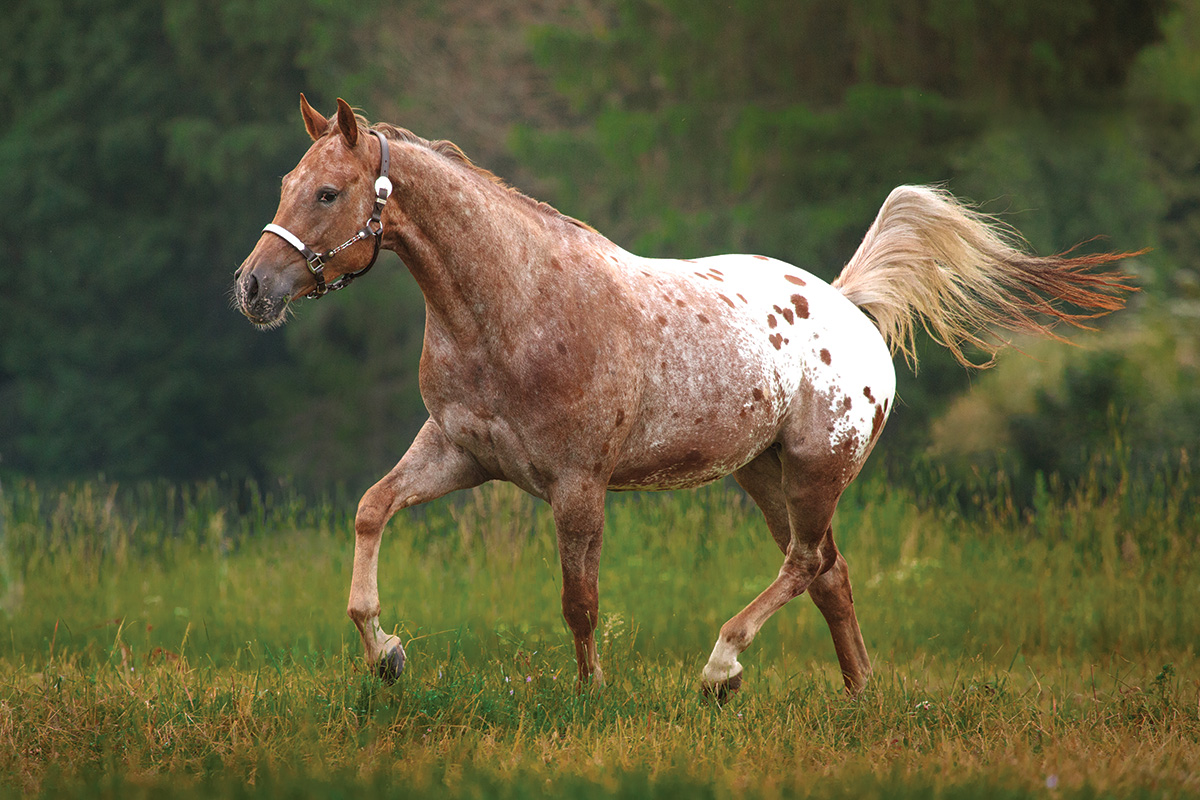
Spot the Spots: Appaloosa and Knabstrupper StyleCommon terms used to describe Appaloosa and Knabstrupper coat patterns include: 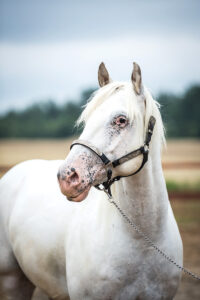 ◆ Spots: White or dark spots |
The Knabstrupper
Similar in color to the Appaloosa, the Danish Knabstrupper also traces back to Spanish horses from the late 1700s and early 1800s in Denmark.
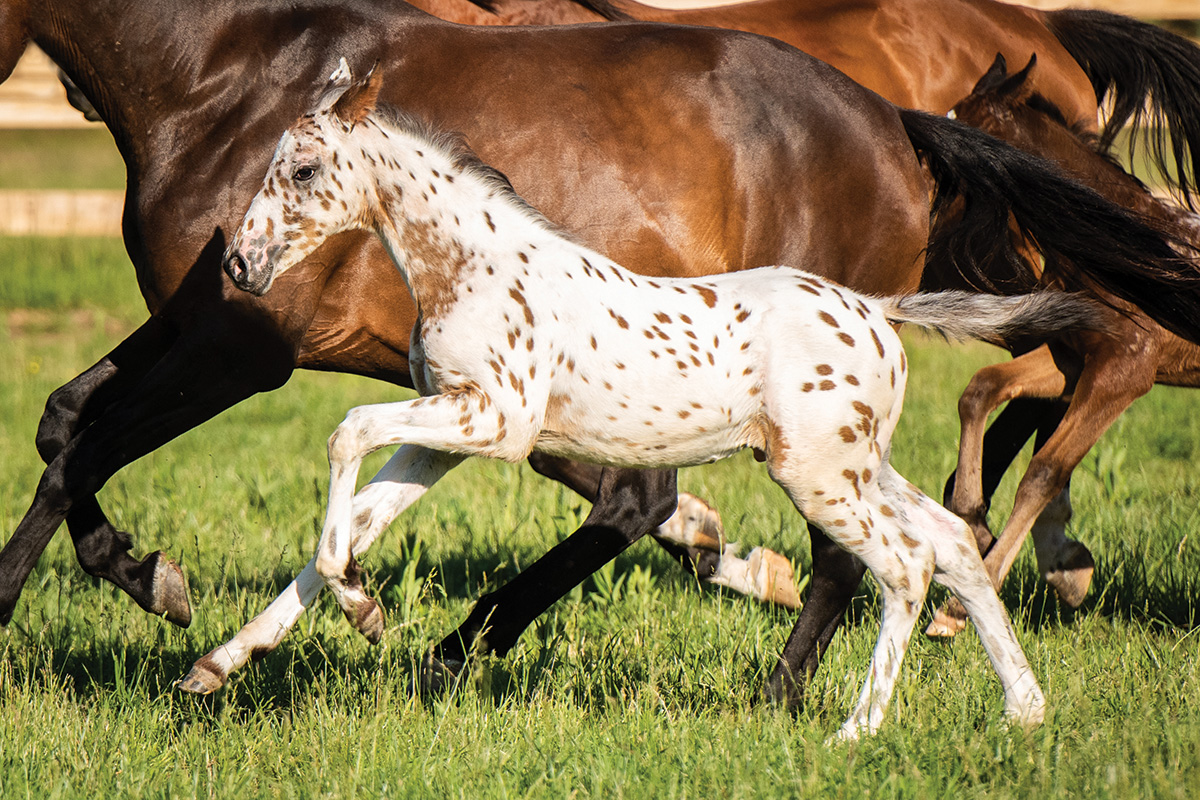
Knabstruppers carried Danish officers in the Schleswig War (1848-1850) and traversed the globe as circus horses. The Knabstrupper traditionally was an all-around horse that could be driven in harness or ridden under saddle.
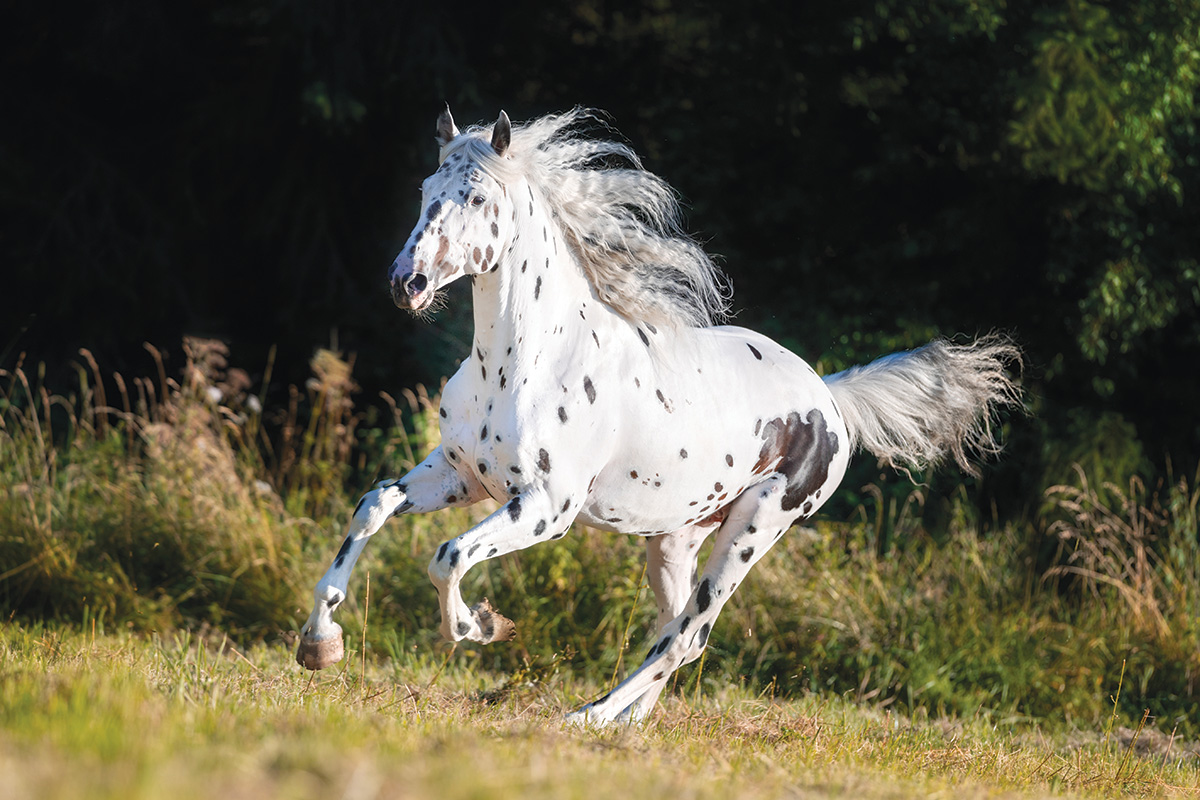
Today, these spotties are sought-after for dressage, driving, eventing and more. While their popularity across Europe and the U.S. has increased significantly, they are still relatively uncommon.
“Knabstrupper breeding requirements are more akin to a warmblood breeding book, which selectively controls the breeding pool through both pedigree requirements and a grading process, which ensures a more unified type,” says Renee Tucci of the Pennsylvania Knabstrupper breeding farm Murder Hollow. “Over the last few decades, the breed has been selectively bred to a more modern sport horse type.”
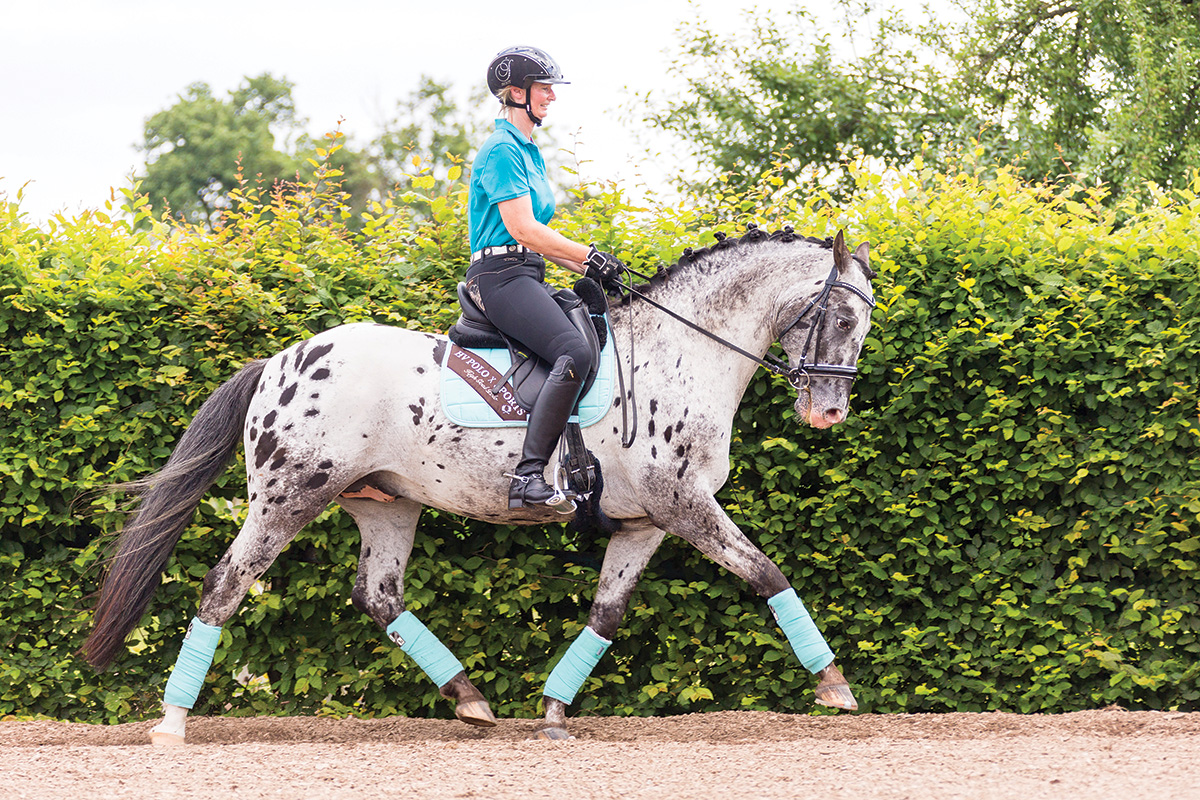
Appaloosa vs. Knabstrupper
Whereas the Appaloosa has a variety of builds, the Knabstrupper sport horse should have a long, sloping shoulder with good freedom of movement and a well-defined wither, which flows into a strong back with short muscular loins, according to Tucci.
Next time you see either of these beautiful breeds, will you be able to spot the difference?
This article about the Appaloosa and Knabstrupper breeds appeared in the June 2022 issue of Horse Illustrated magazine. Click here to subscribe!




